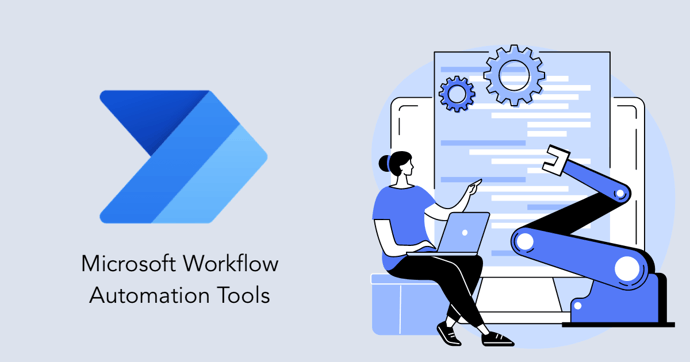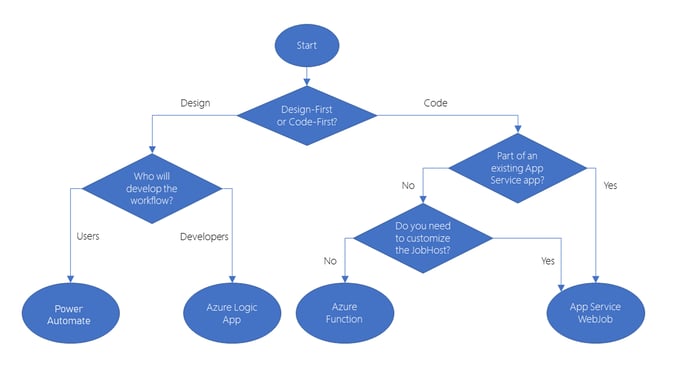Azure Services for Business Process Automation
This article outlines the services offered by Microsoft Azure to streamline business workflows and integrate various systems.
2/26/20242 min read


In the ever-evolving landscape of business automation, selecting the right technology to model and implement workflows is crucial. Generally, workflow automation tools accept inputs, run actions, include conditions, produce outputs, and be triggered either by a schedule or an external event. However, they differ in capabilities, each designed for specific business purposes.
As a key player in the workflow automation domain, Microsoft offers a suite of services designed to streamline and integrate various systems, each catering to different needs and preferences. This article will guide you through the selection process, comparing and contrasting Design-First Technologies with Code-First Technologies offered by Microsoft Azure.
1. Design-First Technologies:
For those who prefer a design-first approach, Logic Apps and Microsoft Power Automate provide intuitive user interfaces to draw out workflows, similar to flow diagrams on paper.
1.1. Logic Apps:
Logic Apps, a powerful service within Azure, excels at automating, orchestrating, and integrating components of distributed applications. Its design-first approach allows users to draw out complex workflows, leveraging over 200 connectors that facilitate seamless integration with external services. Logic Apps supports a visual designer for developers, making it an ideal choice for those with coding skills.
1.2. Microsoft Power Automate:
Built on the foundation of Logic Apps, Microsoft Power Automate is designed for users with little to no development or IT experience. The service allows users to create workflows via a website or mobile app, supporting the same range of connectors and actions as Logic Apps. The principal decision here revolves around who will design the workflow — developers or users.
While Logic Apps provides a visual designer and allows source code editing, Microsoft Power Automate offers extra help and templates for common workflow types, catering to users without coding skills.
2. Code-First Technologies:
For those inclined towards a code-first approach, WebJobs and Azure Functions offer solutions for running programs or scripts automatically.
2.1. WebJobs:
WebJobs, integrated with the Azure App Service, automates program or script execution. Suited for background tasks in web applications, mobile back-ends, and RESTful APIs, WebJobs are an excellent choice when the code needs to be part of an existing App Service application.
2.2. Azure Functions:
Azure Functions simplify the execution of small code pieces in the cloud, without the need to manage infrastructure. Offering a wider range of trigger events, language support, browser-based code development, and a pay-per-use pricing model, Azure Functions are the default choice for many.
Summary:
Choosing the best Azure service to automate your business processes requires careful consideration of the complexity of workflows, the desired level of customization and your team’s skills. The following diagram shows a simplified flow chart that you can use to choose the best technology to use for your business process:


At Use-Case Factory, we specialize in workflow automation tools, partnering with industry leaders in this space, including Microsoft. Considering your business requirements and technology stack, we can design and build workflow applications to meet your automation needs in the dynamic business landscape.
Contacts
info@usecasefact.com
Location
Toronto, ON, Canada

